Many computer users have decided to invest in Microsoft’s Surface products, and that’s not a bad idea because the Surface line of devices is still some of the best Windows 11/10 computers out there. Being at the top doesn’t mean constant smooth sailing, which is why some users have come across issues – like automatic and erratic screen dimming.
Surface Pro screen dimming problem
One of the most prominent problems has much to do with the Surface Pro. You see, there are times when the device will suffer from screen dimming issues, and this can be a real annoyance, especially for those who use their device regularly.
But not to worry, there are several ways one can solve the screen dimming issue without having to send the Surface Pro 4 to a professional or back to Microsoft. Now, we should point out that this is a common issue; therefore, one shouldn’t take it too seriously.
OK, so let’s talk about getting this problem under control. Be sure to follow the steps as laid out, and we promise you’ll be up and running in no time.
1] Check for Updates via Windows Updates
Windows 11
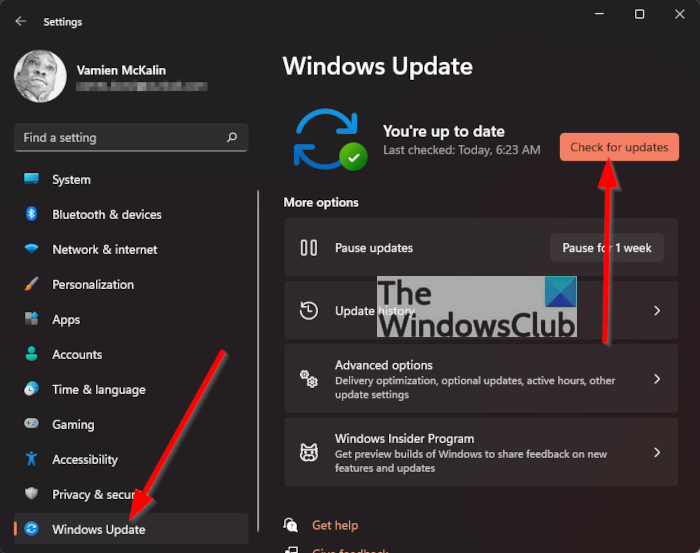
Surface Pro screen dimming problem can be fixed by simply installing the latest update if one is available. It makes sense, to begin with checking for updates because Microsoft tends to release updates regularly when it comes down to its Surface line of products.
To check for the latest update, please open the Settings app by clicking on the Windows key + I, then from there, navigate down to Windows Update located at the bottom. Select the Windows Update button then be sure to click on Check for Updates.
Windows 10
In Windows 10, follow these steps:
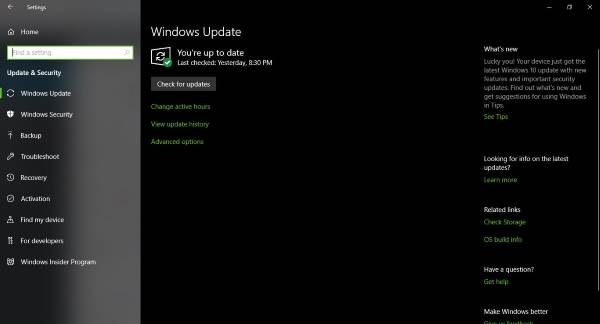
To check for the latest Windows Updates, navigate to Settings > Updates & Security, then click on the check for updates option.
If you’re lucky, you might even come across a new update from Intel themselves since the core components come from that company.
Now, if you’re more interested in updating the graphics card driver, go to Device Manager and check from there. Just click on the Cortana button, type Device Manager Settings in the search box, then click on the option when it makes itself available.
Alternatively, you can visit the Intel website to download the latest Intel graphics driver manually.
2] Install new Graphics Card driver
Another step that could solve the screen dimming issue on your Microsoft Surface Pro product, is to download and install new Graphics Card drivers. To learn how to get this done, you will have to read How to update Graphics Drivers in Windows 11.
3] Did the problem appear after updating Windows 11/? Let’s rollback
If the problem started after a feature upgrade, you might want to consider a Rollback.
Windows 11
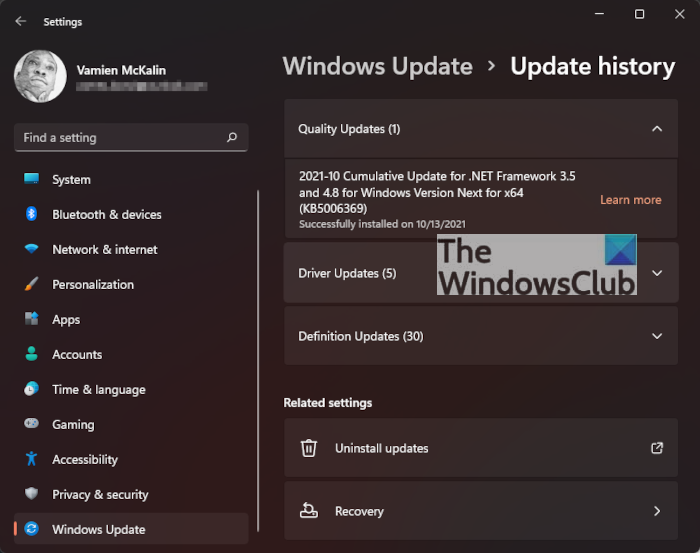
If your problems began after updating the Windows 11 operating system, then your best bet is to roll back the update to the previous.
To get this done in a timely manner, please launch the Settings app by clicking on the Windows Key + I, then select Windows Update. From there, navigate to Update History > Uninstall Updates. Locate the latest Update installed, and remove it.
Once that is done, restart your computer. Then check if everything is back to normal. If the problem started after a feature upgrade, you might want to consider a Rollback.
Windows 10
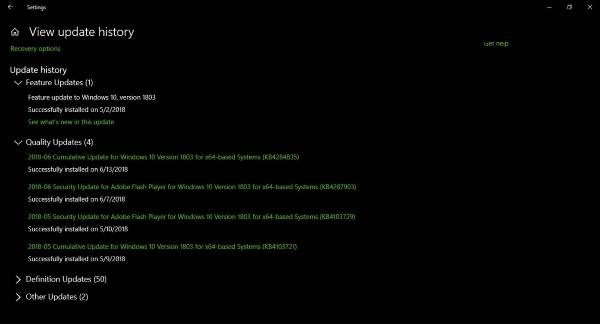
Launch the Settings app by clicking on the Windows Key + I, then select Updates & Security > Windows Update. From there, navigate to Update History > Uninstall Updates. Locate the latest Update installed, and remove it.
Once that is done, restart your computer. Then check if everything is back to normal.
4] Adaptive Brightness on? Turn it off
When it comes down to saving power, this is where adaptive brightness comes into play. For those who aren’t aware, adaptive brightness is designed to scan your room and surroundings for a certain level of light. Depending on what it detects, the system automatically changes the brightness of your screen. It’s been a popular feature on smartphones for quite a while now, and you know what? It works, but there are times when it doesn’t.
Windows 11
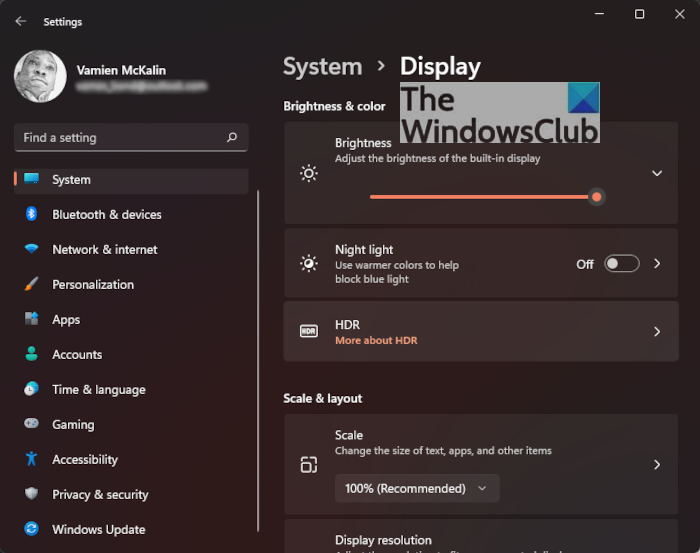
When it comes down to saving power, this is where adaptive brightness comes into play. For those who aren’t aware, adaptive brightness is designed to scan your room and surroundings for a certain level of light. Depending on what it detects, the system automatically changes the brightness of your screen.
It’s been a popular feature on smartphones for quite a while now, and you know what? It works, but there are times when it doesn’t.
To turn off adaptive brightness, you must first open the Settings menu by clicking the Windows key + I, and from there, go to System > Display. Now, from the Display section, you will want to select Brightness, and from there you should see options relating to Adaptive Brightness, so make the necessary changes.
Restart your Windows 11 computer and check to see if the screen dimming issue is still being a nuisance.
Windows 10
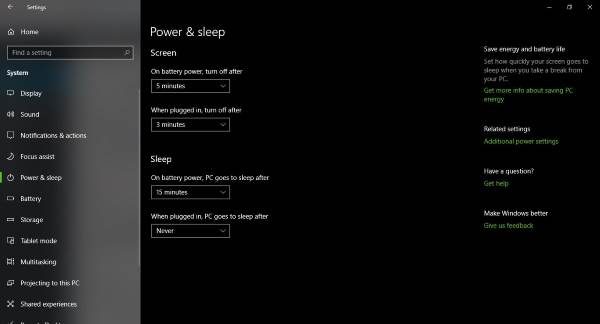
To turn off adaptive brightness, fire up Windows search, and then search for power options. When it pops up in the search query, click on Power Options, then choose your power plan, and finally click on Change Plan Settings.
The next step is to navigate to Change Advanced Power Settings, then Display > Enable Adaptive Brightness. From here, change Plugged In and On Battery to off, and that’s it. Click OK, restart your computer, and move on.
5] Check Graphics Software Settings
Both Intel and AMD offer software that can change display settings. Surface devices are powered by Intel, and you need to look for Intel Graphics software and check if there is a setting that changes the brightness for any reason.
Why is my screen so dim all of a sudden?
It usually happens when you lose the AC adapter cord, or someone turns off the supply. When it happens, the battery mode kicks in and reduces the brightness.
Why does my screen dim on dark pages?
It happens on laptops that are designed to act this way. On a dark background where the brightness can be reduced, it does so to save battery life. However, in a white background, it will brighten up. It is also related to the dynamic brightness change.
If nothing helps, you may want to consider resetting your Surface Pro device.
Related reads that may help you:
Leave a Reply